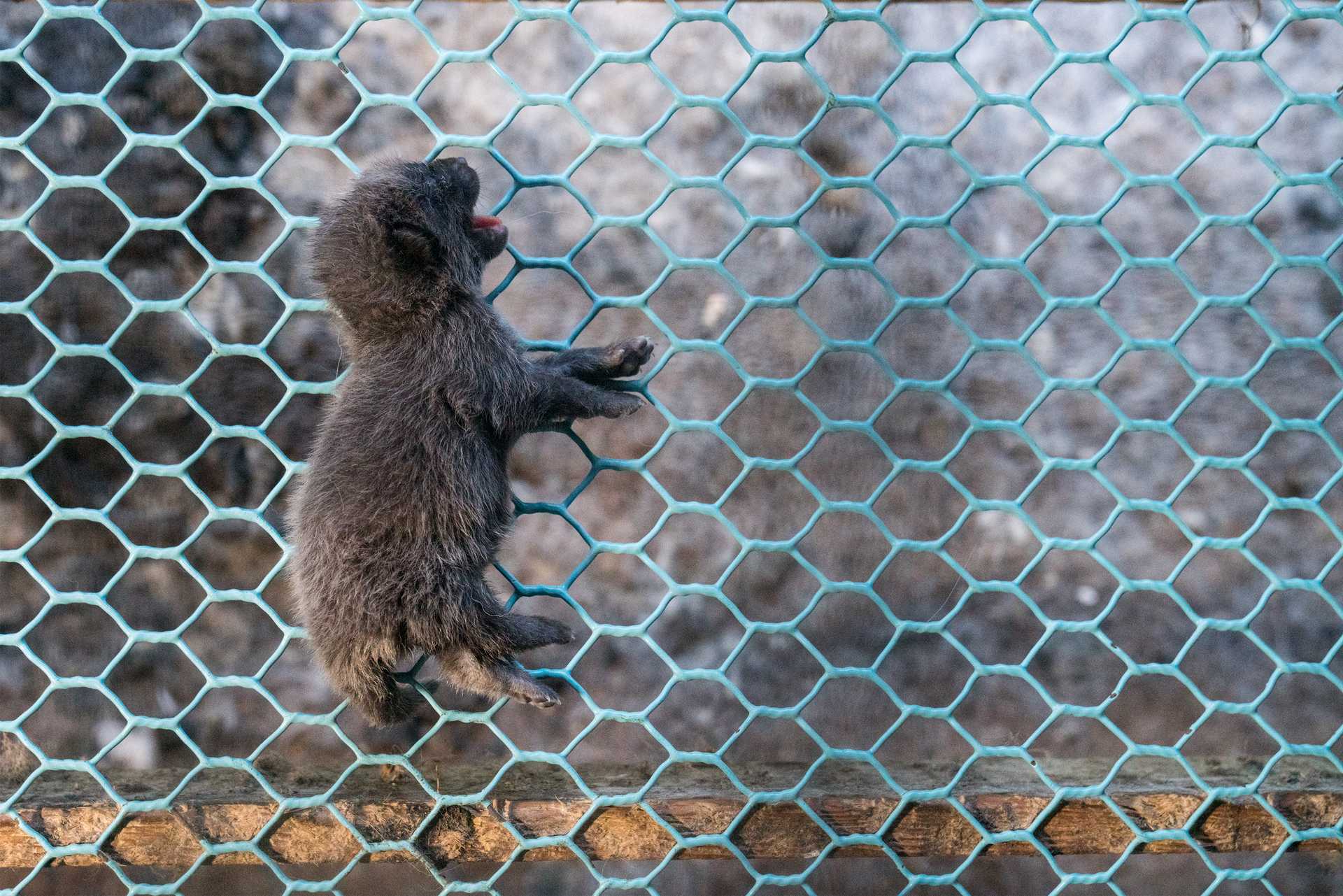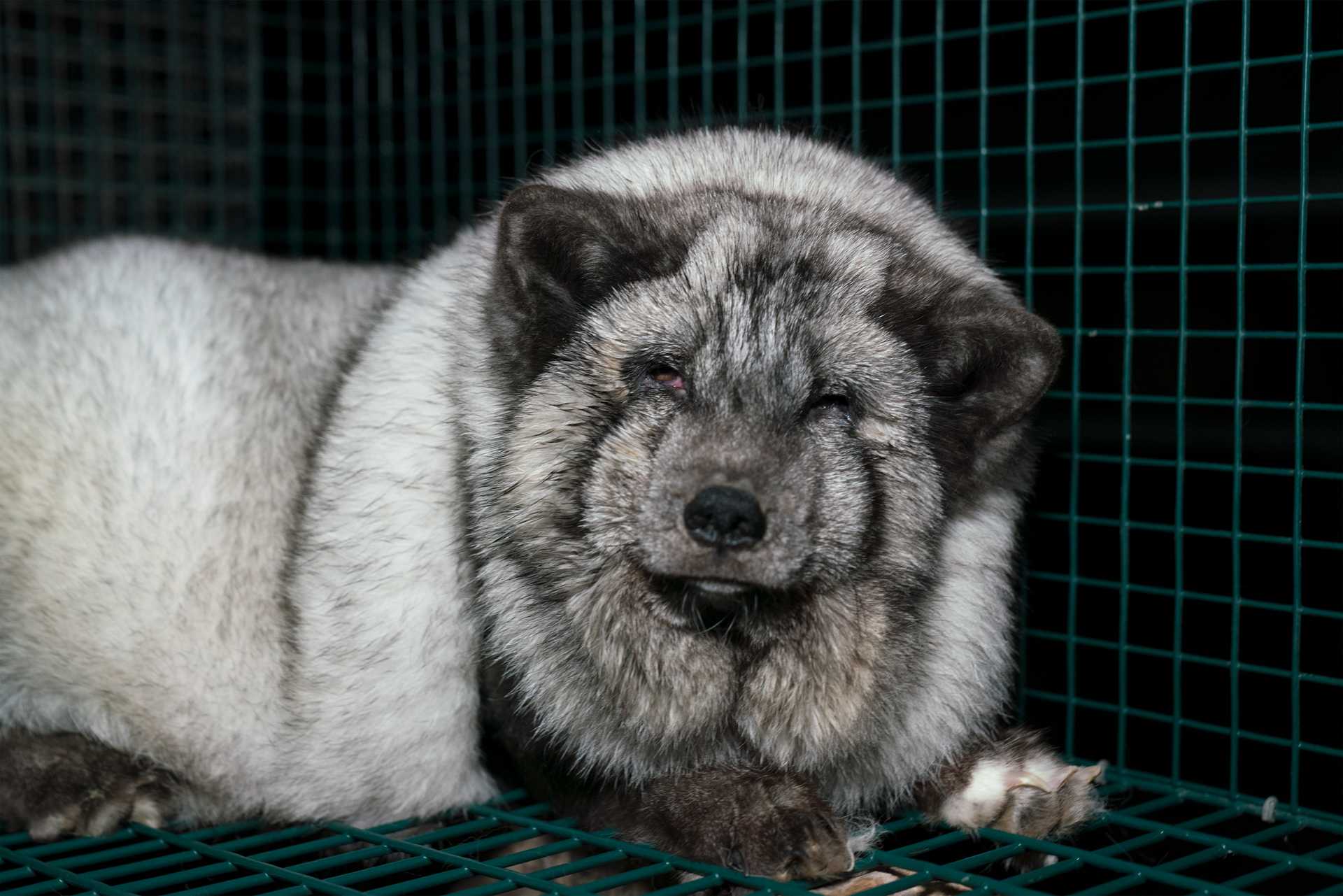The horrors of fur farming revealed again
An investigation by animal advocacy group reveals the horror of fur farming in Finland – again. The new pictures showing appalling conditions and severely injured, mentally distressed animals have been taken during the summer and fall 2019. The investigation proves that the fur industry has been unwilling to improve the conditions on their farms.
Help us help the animals and bring an end to the horrors of fur farms. Even a small donation helps:
According to Oikeutta eläimille, a Finnish animal rights organisation, the same problems can be seen in all of the farms. The animals spend all of their lives in small, barren, wire mesh battery cages. In these conditions they cannot follow the behavioural needs of wild carnivores. This leads to bad welfare and mental distress, even cannibalism.

Kristo Muurimaa, a photographer who participated in investigating some of the farms, says: “The fox and raccoon dog cubes had severe difficulties in walking on the wire floor, because their tiny legs would fall through the netting. We saw dead animals left to rot in the cages, as well as foxes with infected eyes swollen shut. We saw a mink with a huge flesh wound in its head, being cannibalised by cage mates while still alive.”
The pictures also reveal disgustingly filthy drinking water that the animals have to drink. In the wild, mink spend most of their time in swimming and diving, but on farms, this is the only water they see.

Many animals in the videos display stereotypical behaviour, which is a sign of mental distress and extreme boredom. Mink, raccoon dogs and foxes run pointlessly back and forth their cages.
Oikeutta eläimille publishes the investigation in cooperation with Humane Society International/UK. The executive director of the organisation, Claire Bass, said: “We saw a few hundred of the millions of foxes and mink trapped in miles of battery cages in Finland. These poor young animals exist only as vessels for their fur, as broken and tormented souls. We saw weeping eye infections, infected wounds, dead cubs and cannibalism; all of this suffering to provide a frivolous product that the fashion industry does not need. It’s important for consumers, designers and politicians to see that awful reality laid bare, that despite what the fur trade tries to portray on catwalks there is nothing glamorous about fur. As long as the UK allows British businesses to trade in fur, we are complicit in the cruelty. Britain was the first country in the world to ban fur farming, now it’s time for us to finish the job and become the first country in the world to ban fur sales too.”

England banned fur farming already in 2000. With brexit, it becomes possible to follow the example of California and ban the sales of fur in the country.






